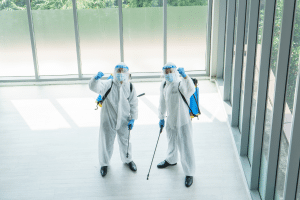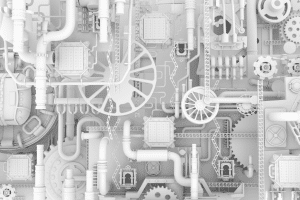A clean room is a meticulously controlled and organized environment designed to perform sensitive processes under highly sterile conditions. In modern industry, clean rooms are an integral part of operations in sectors such as pharmaceuticals, electronics, food production, and aerospace. The core concept behind a clean room is to prevent the infiltration of contaminants such as dust, bacteria, or chemicals that could compromise product quality or disrupt manufacturing processes.
Key Features of a Clean Room
Contamination Control:
The clean room is specifically designed to prevent the entry of contaminants from the air and external environment. Advanced filtration systems, such as HEPA and ULPA filters, capture microscopic particles to ensure that the air in the room is nearly completely clean.
Positive Air Pressure:
Clean rooms are designed with systems that maintain higher air pressure inside than outside. This ensures that if there is a leak, air will flow outward rather than inward, preventing contaminants from entering.
Temperature and Humidity Control:
Controlled temperature and humidity are essential for maintaining process stability and a high level of cleanliness.
Protective Clothing:
Anyone entering a clean room must wear specialized garments, including shoe covers, gloves, masks, and sometimes full protective suits. These garments prevent bacteria, sweat, or dust from the human body from contaminating the environment.
Industrial Applications
Clean rooms are used for critical processes in industries where any level of contamination can cause significant damage. Examples include:
Pharmaceutical Industry:
Drug manufacturing requires completely sterile conditions to avoid contamination that could endanger lives. Clean rooms are used for chemical mixing, sterile drug packaging, and laboratory testing.
Electronics Industry:
Manufacturing electronic components, such as chips, requires an environment free from dust particles, as even the tiniest speck can seriously affect the functionality of a component.
Food Industry:
In sterile food production and packaging processes, clean rooms help prevent microbial contamination and maintain food quality.
Aerospace Industry:
The production and assembly of satellites, spacecraft components, and other sensitive equipment require sterile conditions to prevent failures during launch or mission operations.
How is a Clean Room Designed?
Designing a clean room is a complex process that includes several stages:
-
Defining Objectives: Establishing specific requirements such as the desired cleanliness level, environmental conditions, and room size.
-
Architectural Design: Using special materials that prevent dust buildup, such as smooth and easy-to-clean walls and surfaces.
-
Ventilation and Filtration System: Installing advanced systems to maintain clean air flow and controlled conditions.
-
Monitoring and Control: Incorporating systems for constant monitoring of cleanliness levels, temperature, and humidity.
Clean Room Maintenance
Maintaining the cleanliness and proper functioning of a clean room is critical. Maintenance includes:
-
Regular Cleaning: Daily cleaning of all surfaces and equipment using approved cleaning agents.
-
Periodic Testing: Regular checks of filtration and control systems to ensure proper operation.
-
Employee Training: Ongoing training on correct procedures and work protocols in the clean room environment.
Advantages of Clean Rooms in Industry
-
Improved Product Quality: Sterile conditions ensure that products meet the highest quality standards.
-
Prevention of Economic Loss: Contamination in production can lead to rejection of large product batches. Clean rooms significantly reduce this risk.
-
Compliance with Standards: In many industries, such as pharmaceuticals and aerospace, clean rooms are a mandatory requirement under international standards.
Conclusion
A clean room is a vital component in advanced industries, enabling precise processes and high-quality outcomes. Proper design, maintenance, and usage of clean rooms not only prevent contamination but also ensure compliance with the highest standards of quality and safety. The use of clean rooms continues to evolve with new technologies that streamline processes and enhance industry performance.










